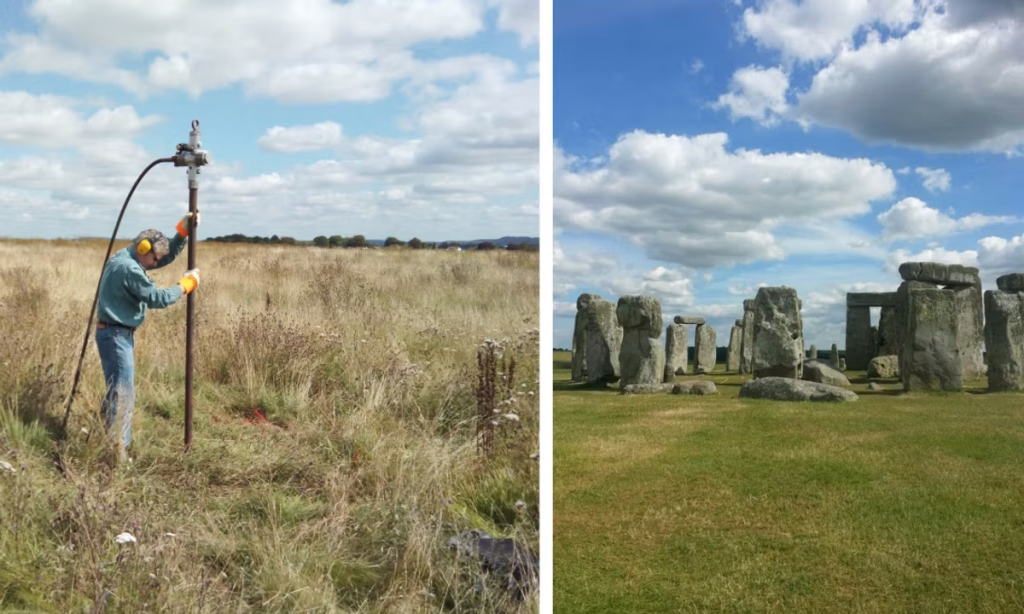Archaeologists have confirmed that a series of deep pits discovered near Stonehenge in Wiltshire, UK—some of which are five metres deep—were carved out by humans more than 4,000 years ago.
The circle pits at Durrington Walls and Woodhenge, around 2 miles north-east of Stonehenge, are set at regular intervals, ten metres in diameter and more than five metres deep, making this the “largest known prehistoric structure in Britain” the archaeologists behind the project say.
The circle of deep shafts located at the Unesco World Heritage site was first discovered in 2020. A paper published this month in the journal Internet Archaeology entitled “The Perils of Pits” outlines further research work, concluding that the huge holes were indeed made by humans.
The cohesive pit structure shows evidence of human intervention, says Vincent Gaffney of the School of Archaeological and Forensic Sciences at the University of Bradford, who led the research team. “These features were not simply dug and abandoned; they were part of a structured, monumental landscape that speaks to the complexity and sophistication of Neolithic society,” Gaffney says in an online statement. Experts from the universities of St Andrews, Warwick and Birmingham are also involved in the project.
The pits may have marked a sacred boundary linked to ceremonial activity at Durrington Walls, echoing cosmological ideas that shaped the Stonehenge landscape, the project statement adds. Gaffney says that the pit diggers may have been trying to connect with the underworld.
He told The Guardian: “As no single technology can answer all the questions [linked to the discovery], multiple types of geophysics equipment was used to establish the size and shape of the pits. The exceptional size of the pits demanded a novel strategy to explore them without the need for a major, and very expensive, excavation.”
Animal and plant DNA was recovered from the soil by digging narrow boreholes. “Using borehole coring, sediment analysis, geochemistry, and cutting-edge techniques such as optically stimulated luminescence dating and environmental DNA (sedaDNA), the team is reconstructing the story of these colossal features,” the online statement says.
